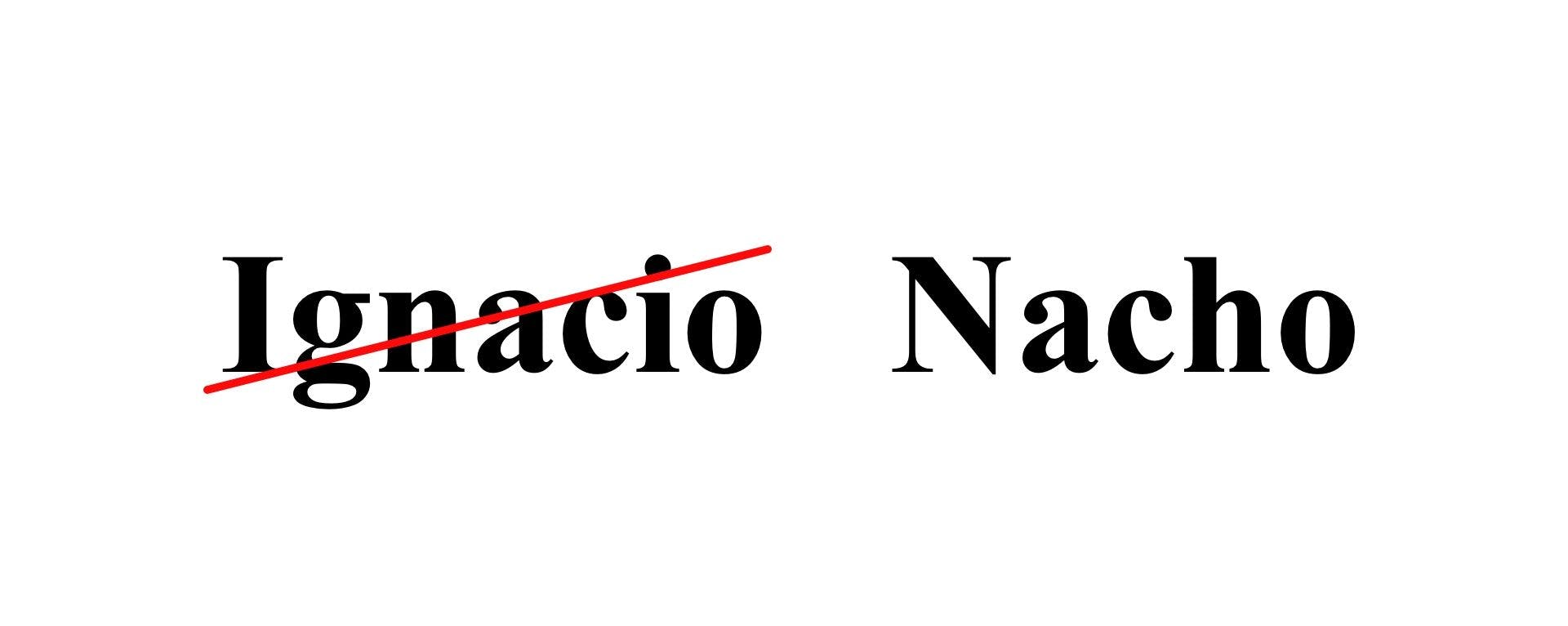April 6, 2022
•
5 min read
Making Sense of Spanish Diminutive Names
In short, a Spanish diminutive name is a nickname that you use in place of a typical Spanish given name. We do this in English all the time without realizing it. Bob for Robert, Jack for Jonathan, Suzie for Susanne. . . etc. A classic Spanish example would be Mari for María. Using a diminutive name is a way of denoting affection—and it never hurts to let people know that you’re working to become a part of their culture.
Rafael Bracho
Insurance Expert
Making Sense of Spanish Diminutive Names
It’s Complicated
Introduction
Making Sense of Spanish Diminutive Names
If you’re an expat in a Spanish speaking country, you’ve likely struggled with Spanish diminutive names at some point in your life. Sometimes they make sense, but other times they can seem ridiculous to those expats who didn’t grow up in a Spanish-speaking country.
In this article, Expat Insurance has tried to give you a few tips for making sense of Spanish diminutive names in hopes of helping you better assimilate into your local environment.
What Is A Diminutive Name?
Making Sense of Spanish Diminutive Names
In short, a Spanish diminutive name is a nickname that you use in place of a typical Spanish given name. We do this in English all the time without realizing it. Bob for Robert, Jack for Jonathan, Suzie for Susanne. . . etc.
A classic Spanish example would be Mari for María. Using a diminutive name is a way of denoting affection—and it never hurts to let people know that you’re working to become a part of their culture.
It can also be useful in other ways. For example, I was in Sayulita with an American friend, and we decided to make a day trip to San Pancho (the next town over). We hopped in his car and started driving. After about 20 minutes, I knew we were lost—the town is only about five miles away. My friend said that he’d been checking Google Maps and hadn’t seen a town named San Pancho yet. Google Maps had listed it by its official name, “San Francisco”.
The Problems with Spanish Diminutive Names?
Making Sense of Spanish Diminutive Names
– Sometimes They Make No Sense –
The issue is that sometimes Spanish diminutive names make no sense. Thus, as we’re endeavoring to make sense of Spanish diminutive names, you need to bear with us. Sometimes, they just are what they are.
For example, Pepe for José. Where does that one come from? Pepe doesn’t sound like José. It doesn’t even use the same letters.
– Several Different Diminutive Names for One Given Name –
Sometimes, one name can have several different diminutive names. Take Francisco from our example above. Francisco can be Pancho (as in San Pancho), but it can also be Paco. It can also be Pacho, Paqui, and Paquito.
Our advice is to never start calling someone by a diminutive name if you’re unsure which one to use. Usually, they call themselves whichever version they’ve used all their lives. However, you can always ask them politely, do you mind if I call you Paco? They will likely let you know which one they prefer.
– One Diminutive Name for Several Given Names –
To make matters worse, one diminutive name can stand for several different names! I know, I’m sorry to do this to you. For example, Beto can be short for Roberto. But it can also be used for Norberto, Humberto, Alberto, Gilberto, Rigoberto. . . etc.
So if you meet a guy named Beto, you don’t really know what his name is.
Compound Spanish Diminutive Names?
Making Sense of Spanish Diminutive Names
Sometimes, diminutive names in Spanish are a compound of their first and second names. Remember that in Spanish speaking countries, people generally have a first and a second name, and then two last names (one from their father’s side and one from their mother’s side).
I’ll just make up a name to help with this example: Juan José Gutiérrez Otero. (You may very well know a person with this name. Now, you see the commonality of Spanish names necessitates the use of all four names.)
So, our dear, made-up friend likes to be called Juanjo—a compound of Juan José. Or maybe he prefers Juancho. (Yes, this is also a compound diminutive name for Juan José. I know, I told you it was confusing.)
Sometimes, these compound names can be really complicated, such as Chema. Can you get what Chema stands for? I’ll give you a hint: It’s a guy’s name.
Times up. Of course you couldn’t—because it makes no sense! Chema is short for José María.
However, if I give you an easier example, you can likely get it now: Maripao. Can you get this one? Yep! It’s short for María Paola.
Conclusion
Making Sense of Spanish Diminutive Names
Spanish diminutive names are a great way to get to know someone on a more personal level. If you learn that the woman who runs the bodeguita around the corner is named Lucía, try calling her Chía. You’ll likely notice that a familiarity begins to blossom with a Spanish speaker when you use their diminutive names.
For a comprehensive list of Spanish Diminutive Names, click here.
Rafael Bracho
Insurance Expert & Writer
For several years, Rafael has been crafting articles to help expats and nomads in their journey abroad.
Get Protected While Living Abroad
Found this article helpful? Make sure you have the right insurance coverage too. Get instant quotes for international health, life, and travel insurance.
Takes 2 minutes • Compare multiple providers • Expert advice

